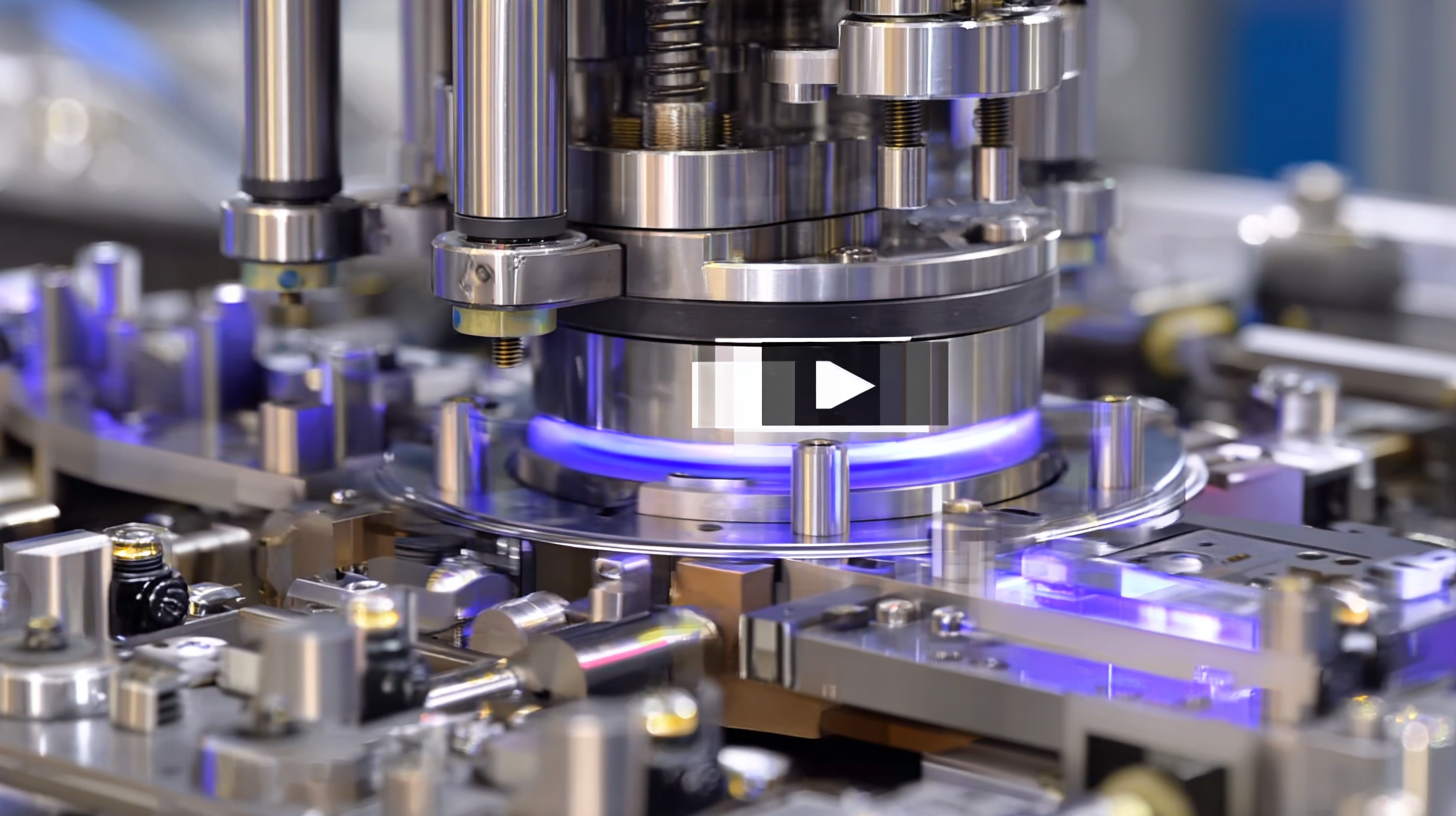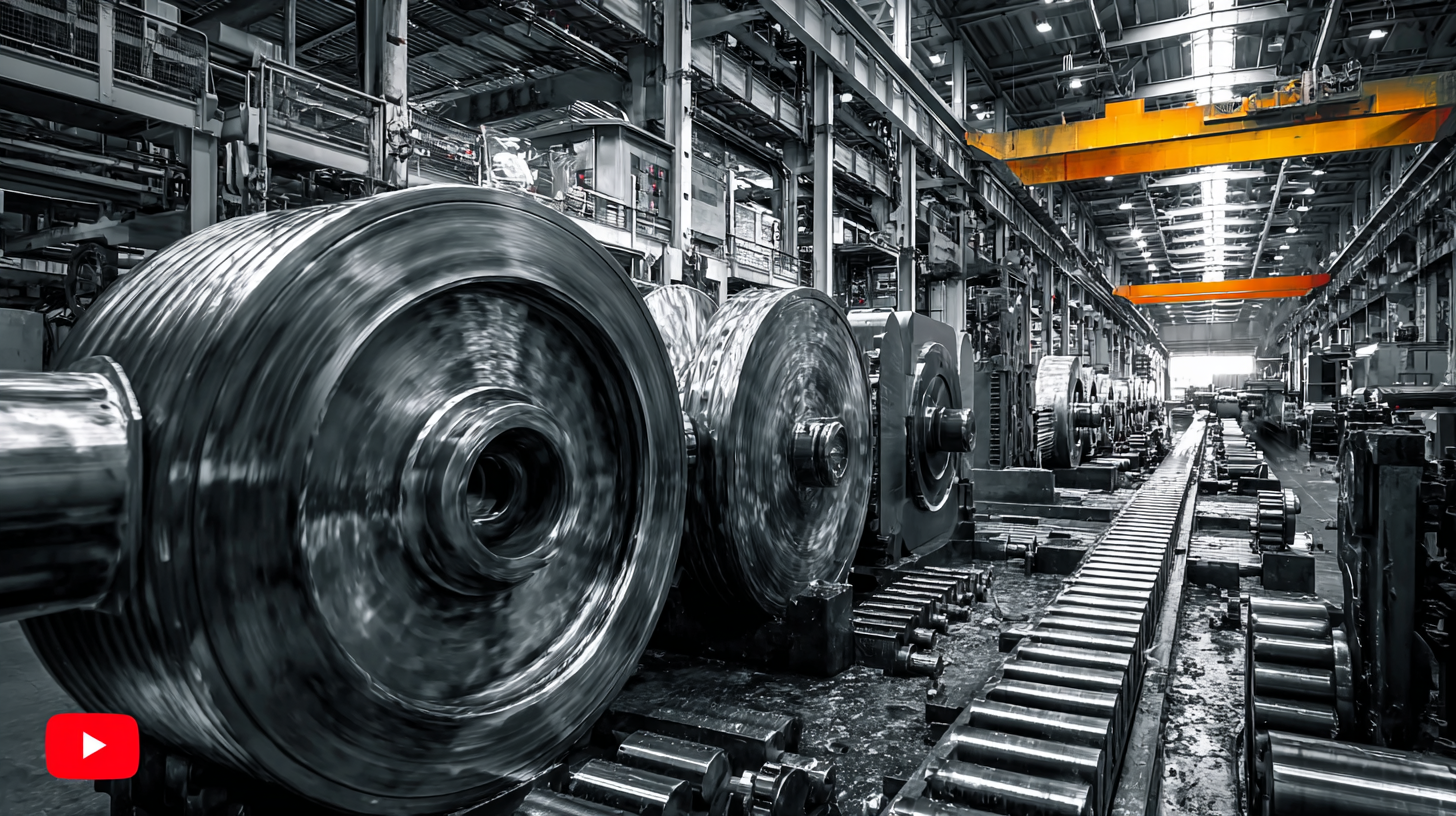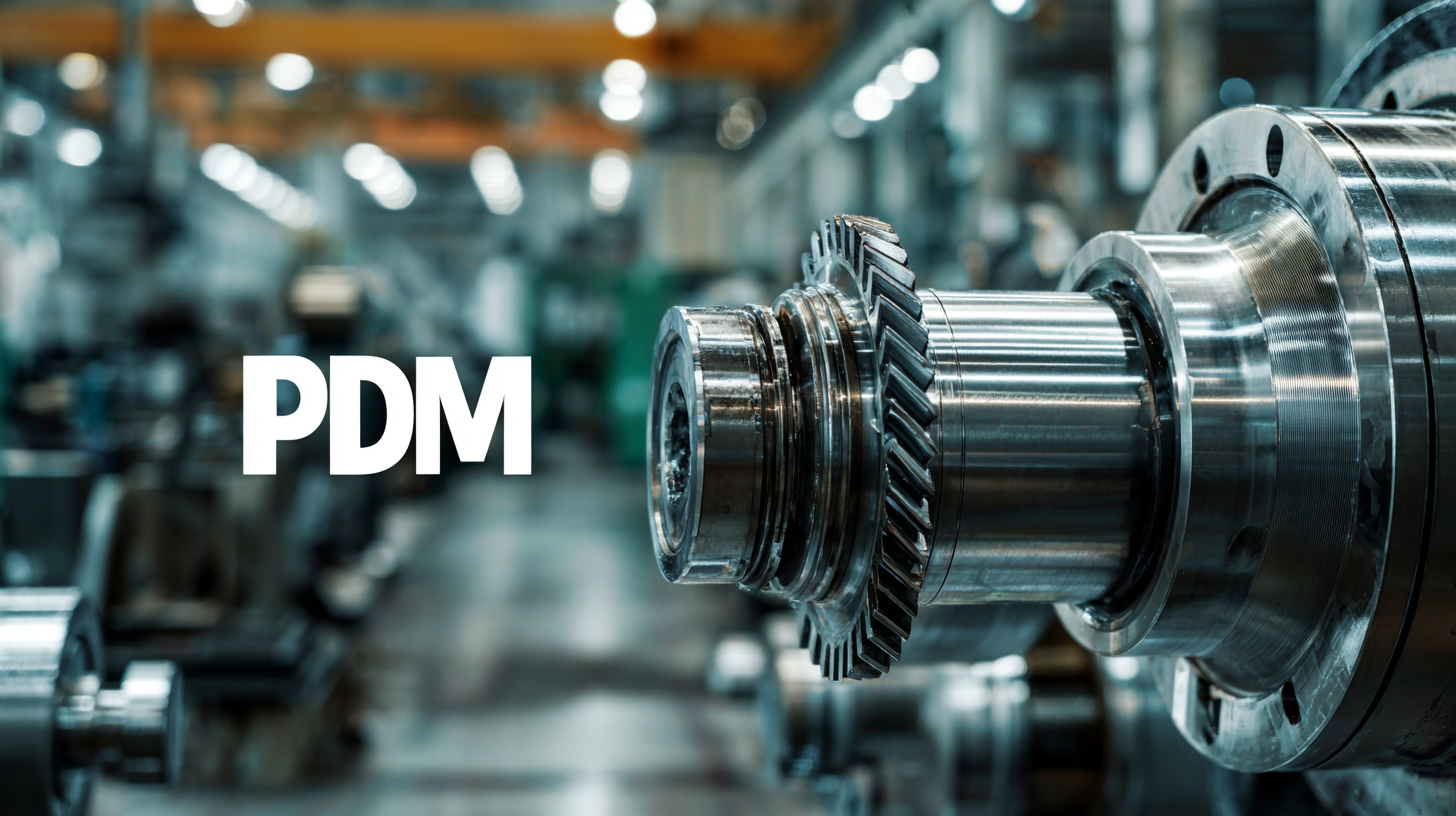
2025 Trends in Best Industrial Machinery Manufacturing: Solutions for Global Procurement Challenges
The Industrial Machinery Manufacturing sector is set to experience transformative changes by 2025, driven by technological advancements and evolving global procurement challenges. According to a report by MarketsandMarkets, the global industrial machinery market is projected to reach $650 billion by 2025, showcasing a compound annual growth rate (CAGR) of 6%.

This growth is fueled by the increasing demand for automation and smart manufacturing solutions as companies strive to enhance production efficiency and reduce operational costs. Furthermore, as the global supply chain landscape becomes more complex, manufacturers must adopt innovative strategies that leverage digital technologies to streamline procurement processes.
Embracing these trends will not only enable businesses to overcome current supply chain disruptions but also position them for sustainable success in the competitive industrial landscape. This blog will explore key trends in industrial machinery manufacturing and propose effective solutions to meet global procurement challenges.
Emerging Technologies Reshaping Industrial Machinery Manufacturing by 2025
By 2025, the landscape of industrial machinery manufacturing will be dramatically transformed by emerging technologies.
Advancements in artificial intelligence,
machine learning, and the
Internet of Things (IoT) will not only enhance
production efficiency but also enable predictive maintenance,
thus reducing downtime and operational costs. These technologies create a more connected ecosystem, allowing
manufacturers to optimize their supply chains and respond swiftly to global procurement challenges.
Tip: Embrace smart technology solutions such as IoT sensors that can monitor machinery performance in
real-time. This proactive approach facilitates data-driven decisions, which can significantly enhance your manufacturing
processes.
Furthermore, the integration of additive manufacturing (3D printing)
will revolutionize how components are produced. This technology allows for on-demand production,
minimizing the need for large inventories and thereby addressing procurement delays. As companies begin to
leverage 3D printing, they can also explore sustainable materials,
contributing to greener manufacturing practices.
Tip: Invest in training your workforce to adapt to these new technologies. A knowledgeable team will
be essential in maximizing the benefits of emerging tech, ensuring that your operations not only keep pace with
industry trends but also lead in innovation.
Impact of Supply Chain Disruptions on Global Procurement Strategies
In recent years, the industrial machinery manufacturing sector has faced significant supply chain disruptions that have reshaped global procurement strategies. The COVID-19 pandemic, geopolitical tensions, and natural disasters have revealed vulnerabilities in traditional supply chains, forcing companies to reevaluate their sourcing and logistics approaches. As a result, many manufacturers are now prioritizing agility and resilience in their procurement processes. This shift includes diversifying suppliers, investing in local production capabilities, and leveraging technology to enhance supply chain visibility.

Moreover, the impact of these disruptions has propelled the adoption of innovative procurement solutions. Companies are increasingly turning to digital platforms that facilitate real-time monitoring and communication with suppliers. Enhanced data analytics also play a crucial role in predicting potential disruptions and optimizing inventory levels. By embracing such technologies, manufacturers can not only mitigate risks associated with supply chain uncertainties but also create a more streamlined and efficient procurement framework that is better suited to navigate future challenges. As the landscape evolves, these strategies will become critical in maintaining competitiveness within the fast-paced industrial machinery market.
Sustainable Practices: The Shift Towards Eco-Friendly Machinery Solutions
The industrial machinery manufacturing sector is experiencing a significant shift towards sustainability. As businesses face increasing pressure from consumers and regulatory bodies to adopt eco-friendly practices, manufacturers are transforming their production processes. This transition not only reduces their environmental impact but also opens up new opportunities for innovation and cost savings. Sustainable practices such as utilizing renewable energy sources, reducing waste, and implementing circular economy principles are becoming essential components of modern manufacturing.
Tip: To initiate your journey toward eco-friendly machinery solutions, conduct a sustainability audit of your current operations. Identify key areas where energy consumption can be minimized or where materials can be reused or recycled. Collaborating with suppliers who prioritize sustainability can also help enhance your approach.

One of the prominent trends is the adoption of advanced technologies that facilitate the production of greener machinery. Innovations such as 3D printing and smart manufacturing processes allow for more efficient use of resources, cutting down on excess materials and energy. As the demand for sustainable machinery grows, investing in research and development to create innovative, eco-friendly designs becomes a crucial strategy for staying competitive in the market.
Tip: Stay informed about the latest advancements in sustainable technologies by attending industry conferences and webinars. Networking with peers can provide insights into successful strategies, as well as inspire new ideas to enhance your sustainable practices.
Data-Driven Decision Making: Leveraging Analytics in Machinery Procurement
In the rapidly evolving landscape of industrial machinery manufacturing, data-driven decision making is becoming essential for addressing global procurement challenges. A recent report by Deloitte highlights that over 70% of procurement professionals are leveraging analytics to enhance their sourcing strategies. By harnessing big data, companies can forecast demand more accurately, identify cost-saving opportunities, and mitigate supply chain risks. This shift towards analytical models enables manufacturers to make informed decisions that align with market dynamics and customer needs.
Furthermore, as per the McKinsey Global Institute, organizations that utilize data analytics in their procurement processes can achieve up to a 15% reduction in operational costs. The integration of predictive analytics allows businesses to anticipate market shifts and adjust their procurement strategies proactively. With advanced tools and technologies, such as machine learning algorithms, manufacturers can process vast amounts of data to uncover insights that were previously inaccessible. This trend not only enhances operational efficiency but also fosters a more agile and responsive supply chain capable of adapting to global challenges.
Global Market Trends: Key Regions Driving Industrial Machinery Growth in 2025
The global industrial machinery landscape is rapidly evolving, with key regions leading the charge in growth by 2025. One of the major market segments poised for expansion is the automotive gear and gear reduction sector, projected to reach a value of $145.96 billion in 2025. This remarkable growth, expected to continue until it hits $237.96 billion by 2033, underscores the increasing demand for efficient automotive solutions amidst rising global procurement challenges.
In parallel, the industrial welding robot market is anticipated to showcase significant momentum, with an estimated market size of $10.35 billion in 2025. The sector is set to witness a compound annual growth rate of 5.3%, reaching $15.65 billion by 2033. This growth is driven by advancements in technology and a rising need for automation across various industries. Moreover, the industrial embedded systems market is expected to make notable strides, offering diverse applications and showcasing the importance of integrated solutions for modern manufacturing processes. As these trends continue to unfold, they reflect a broader shift towards innovation and efficiency in industrial machinery manufacturing.
2025 Trends in Best Industrial Machinery Manufacturing: Solutions for Global Procurement Challenges
| Region | Growth Rate (%) | Key Trends | Challenges | Solutions |
|---|---|---|---|---|
| North America | 5.2% | Automation and AI Integration | Supply Chain Disruptions | Diversifying Suppliers |
| Europe | 4.8% | Sustainable Manufacturing Practices | Regulatory Compliance | Investment in R&D |
| Asia-Pacific | 6.1% | Digital Transformation | Talent Shortage | Upskilling Workforce |
| Latin America | 3.5% | Investment in Infrastructure | Economic Instability | Strategic Partnerships |
| Middle East & Africa | 4.0% | Emerging Technologies Adoption | Political Risks | Risk Mitigation Strategies |
